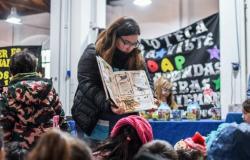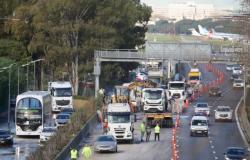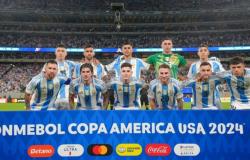He Deliberative Council of the City of Córdoba This Thursday, May 30, the eleventh ordinary session was held, chaired by Vice Mayor Javier Pretto, with a focus on the remembrance of Córdobazo as yesterday marked the 55th anniversary of the city’s uprising against the dictatorship of Juan Carlos Onganía.
The councilor Rossana Pérez (We do United for Córdoba) made a review of the events of the year ’69, remembering that to the cry of “The military dictatorship is going to end, the workers, the students, the neighbors mobilized to the center of the city on the morning of May 29, 1969”.
The councilor recalled that “the city was waiting for the start of the 36-hour active strike of the two CGTs. The city was going to explode, everything was planned by workers and students, the police were distributed. The worker Máximo Mena dies. The people rise up enraged, the support of the population is in the center and the neighborhoods. The 60 blocks of the center were a battlefield. As (Agustín) Tosco said, Cordobazo is the example of the capacity for worker, student and popular resistance. “the dictatorship had to fall.”
In turn, the councilor Sergio Piguillen (UCR) said: “There are undiscussed issues about what happened: the Cordobazo was a consequence of the Onganía dictatorship that had put an end to a government of (Arturo) Illía, which years later history put in its place. Onganía was nationalist, anti-liberal, admirer of Franco, ultra-Catholic linked to Opus Dei. He started his Argentine Revolution with the Noche los Bastones Largos and in Córdoba he found a focus of resistance, which began at minute zero of Onganía, in the FUC, which found an echo in first place in small unions, because the union movement was divided, between those who had collaborated with Onganía and those who opposed Onganía with the graphics, he was the first to give voice to the workers’ resistance in Córdoba to Onganía. Pampillón by the Onganía Police. In that Córdoba of student resistance and unions that wanted to defend the acquired rights, there was a concentration at Córdoba Sport with five thousand workers and police repression. From there, the two CGTs were able to unify and call for a general strike on May 29. Máximo Mena was a worker from the Smata affiliated and militant of the UCR and was the first to fall from Cordobazo and from then on everything was unstoppable.”
The councilor Laura Vilches (FIT) considered that “the detail and views on the events are different. I understand that although there was a call for strike, the murder of Mena gave another dynamic to the events. Tosco said that what they had “The people had taken it into their own hands to make their own destiny and that is where the importance of Cordobazo lies. There are new generations that are interested in this feat such as the mobilization of students in favor of public education.”





